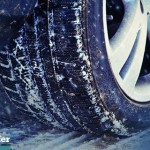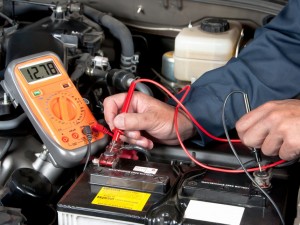 A lot of people find joy in the snowy conditions of winter. But the vast majority of drivers do not look forward to such conditions at all! The roads become a lot more dangerous. The difficulty of driving on them highlights the need to have a good think about your tyres.
A lot of people find joy in the snowy conditions of winter. But the vast majority of drivers do not look forward to such conditions at all! The roads become a lot more dangerous. The difficulty of driving on them highlights the need to have a good think about your tyres.
Tyres are arguably the most important safety feature of your vehicle. So you need to think about whether or not to get winter tyres, or how to improve your current tyres.
What Sets Winter Tyres Apart From Regular Tyres?
Winter tyres – or snow tyres – have a lot of design differences. There are two main differences. The first is the increased number and width of sipes – the thin slits on the surface of the tyre. The second, not present in all winter tyres due to potential road damage, is the presence of metal pins that protrude from the tyre and greatly increase grip on snow and ice. Not everyone wants to invest in a brand new set of tyres for a few months of winter, however. Some people may add some extra integrity to their current tyres by adding a snow chain, which makes for a good temporary alternative to winter tyres. But if you travel on particularly snowy roads, they could be essential.
Taking Care of Regular Tyres
So if you’re not going to get winter tyres, what can you do to keep yourself as safe as possible while using regular tyres? It’s very important that your tyre is adequately inflated, for a start. This is what will ensure that it has enough traction to stop when you need it to as the full surface will come in contact, this also ensures an even tyre wear. A soft kick will often reveal any immediate problems with inflation. But it’s worth actually getting a proper PSI reading using an accurate tyre pressure gauge. This is what will tell you the current tyre pressure. Your car manual should tell you what the optimum pressure level should be.

Getting New Tyres
So you don’t want to blow a lot of cash for winter tyres – but you’re not particularly confident about your current tyres, either. It’s worth remembering that no two tyre makes are the same. Different tyres will have better responsiveness to braking and handling. Traction is another thing that you need to give careful consideration, so always fit the same tyre brand and tread to both sides of an axle. Superior compounds is what allows some tyres to last longer than others while still giving better traction and less roll resistance to save on fuel.
Fuel Efficiency
It’s also worth remembering your fuel and energy efficiency in winter. You’re likely to use more of these elements in winter than in any other time of the year. You may think this is largely due to the increased need for heating in the car, and you’re probably right. But you’ve also got to consider the fuel being used to actually move the car. In these sorts of conditions, it’s not as easy for a car to get from A to B. A lot more fuel is being used to perform basic movements at a level comparable to those in warmer, drier months. The tyres you use have a big influence on your ability to traverse any road – which means it also has a big effect on your fuel efficiency.

 Unfortunately, it’s that cold, icy and rather snowy time of year again, and we need to be prepared for the road conditions which the icy conditions can cause. If you want to stay safe in your vehicle, whilst also ensuring the safety of others around you, it’s important to know exactly what you are doing during the winter months.
Unfortunately, it’s that cold, icy and rather snowy time of year again, and we need to be prepared for the road conditions which the icy conditions can cause. If you want to stay safe in your vehicle, whilst also ensuring the safety of others around you, it’s important to know exactly what you are doing during the winter months.








